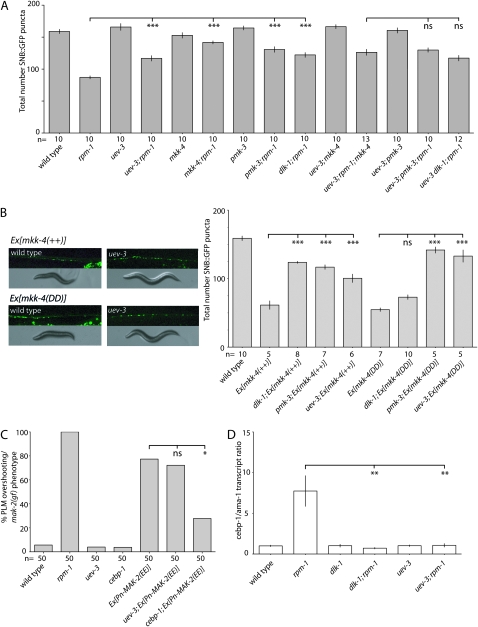Figure 4.—
uev-3 acts in the DLK-1 MAPK cascade, downstream of mkk-4, and upstream of mak-2. (*) P < 0.05, (**) P < 0.01, (***) P < 0.001, (ns) not significant. (A) uev-3(lf) does not further enhance the suppression of rpm-1 in the motor neuron synapses by pmk-3 or mkk-4 or dlk-1. Numbers are mean ± SEM, n as indicated. Statistics, ANOVA with Bonferroni correction compared with rpm-1 single mutant. (B) uev-3 functions downstream of mkk-4 MAPKK. Transgenic animals overexpressing wild-type MKK-4 [mkk-4(++), juEx490] or expressing the constitutively active version of MKK-4 [mkk-4(DD), juEx669] display similarly abnormal synaptic patterns (juIs1), uncoordinated locomotion, and small body size (left). The phenotypes of both types of transgenes are suppressed by uev-3(ju587), and quantitation is shown on the right (mean ± SEM); ANOVA with Bonferroni correction: n as indicated. (C) uev-3 acts upstream of mak-2. Expression of a phosphomimetic MAK-2(EE) causes gain-of-function effects, which is suppressed by cebp-1, but not by uev-3. n as indicated. Statistics, Fischer exact test. (D) uev-3 acts in the dlk-1 pathway to regulate levels of cebp-1 transcripts, qRT–PCR levels of cebp-1 mRNAs normalized against ama-1. Statistics, Student's t-test: n = 3.

